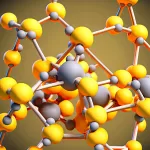
When we talk about our bodies, we often hear about hormones, which are like tiny messengers in our system, controlling a lot of what happens inside us. Two of these hormones, testosterone and estrogen, are super important but often misunderstood.
Testosterone is typically associated with men and estrogen with women, but both men and women have these hormones, just in different amounts. These hormones do a lot more than just define male and female traits. Testosterone is known for its role in muscle growth, bone density, and even how we feel emotionally. On the other hand, estrogen takes care of things like menstrual cycles in women, affects mood, and plays a role in heart health for everyone. How do these hormones work, what do they do in our bodies and how are they important not only to being a man or a woman, but also to maintaining our health and balance?
Unraveling Testosterone: A Hormone with a Broad Spectrum of Influence
Testosterone, often boxed into narrow definitions, is in fact a hormone of wide-ranging impact. It is produced mainly in the testes in males, and in smaller amounts in the ovaries and adrenal glands of females.
Its role in men involves more than just fueling characteristics often labeled as ‘masculine.’In addition to helping to form traits like increased muscular mass and body hair, it does, in fact, aid in the development of reproductive organs like the testes and prostate. However, its influence extends to areas like bone health, emotional well-being, and cognitive function.
Testosterone’s presence in women, though less discussed, is not less important. It aids in maintaining bone density, supports certain functions of the ovaries, and may have a role in modulating sexual desire. Both genders benefit from a harmonious balance of this hormone for overall health.
Testosterone therapy, especially for treating conditions like hypogonadism in men where the body doesn’t produce enough of it, underscores its medical significance. Such treatments, while potentially beneficial, require careful medical oversight.
Navigating Towards Balanced Testosterone Levels
Achieving optimal testosterone levels involves exploring less trodden paths, focusing on holistic lifestyle tweaks, and acknowledging the uniqueness of each individual’s physiology.
- Exploring Nutrient-Rich Diets: Instead of just focusing on specific foods, consider the overall quality and variety of your diet. Embrace a rainbow of fruits and vegetables, diverse protein sources, and ample healthy fats. Uncommon additions like seeds, legumes, and fermented foods can also be beneficial. Pay attention to micronutrient intake, ensuring you get enough zinc, magnesium, and vitamins D and B, which are crucial for hormone health.
- Dynamic Physical Activities: Go beyond standard exercise routines. Engage in activities that are both enjoyable and challenging. This could be anything from rock climbing to dance classes, or even participating in team sports. The goal is to keep your body moving and challenged in fun, new ways.
- Creative Stress Reduction Techniques: Instead of typical stress-management practices, try unique hobbies that relax the mind and body. This could include art therapy, gardening, or learning a musical instrument. Engaging in creative activities can be a powerful way to reduce stress and promote hormonal balance.
- Revitalizing Sleep Practices: Innovate your sleep routine. Experiment with aromatherapy, sleep-focused meditation, or even changing your sleeping environment to include plants or different color schemes that promote relaxation. Recognize the power of a consistent pre-sleep routine that caters to your personal relaxation needs.
- Conscious Lifestyle Choices: Be mindful of your daily habits. This includes not just avoiding harmful substances, but also being aware of your body’s reactions to different environments and activities. Small changes, like reducing exposure to environmental toxins or prioritizing organic products, can contribute to hormonal well-being.
- Personalized Health Monitoring: Regularly consult with healthcare professionals who understand your unique health profile. Consider holistic approaches and be open to discussions about alternative medicine or therapies that might suit your individual needs.
Decoding Estrogen: A Hormonal Powerhouse Beyond Conventional Labels
Estrogen, often pigeonholed into a narrow role, is in reality a hormone with wide-ranging effects across both genders. This hormone, predominantly synthesized in women’s ovaries and in smaller amounts in men’s testes and adrenal glands, defies the usual gender-based categorization.
For women, estrogen does more than just navigate the complexities of the menstrual cycle and pregnancy. It plays a fundamental role in the development of the female reproductive system and extends its influence to areas like bone health, skin vitality, and even mental clarity.
Its presence in men, though typically overshadowed, is no less critical. Estrogen contributes to reproductive health, aiding in sperm maturation. It’s also a key factor in maintaining bone strength and has potential roles in cognitive health.
The therapeutic use of estrogen, such as in hormone replacement therapy for postmenopausal women, highlights its medical importance. Such treatments, aimed at balancing estrogen levels, require meticulous medical oversight due to their complexity and potential side effects.
Charting a Unique Path to Estrogen Equilibrium
Harmonizing estrogen levels is a personalized journey, one that invites a fresh and thoughtful approach to daily habits and choices. It’s about crafting a lifestyle that’s attuned to your body’s specific hormonal rhythms.
- Nutritional Diversity and Quality: Embrace a diet that’s rich in variety and quality. Focus on incorporating a wide range of vegetables, particularly leafy greens and cruciferous vegetables like broccoli and cauliflower, which are known for their hormone-balancing properties. Seek out whole grains and lean proteins, and consider the inclusion of unique items like seaweed and herbal teas known for supporting hormonal health. Opt for organic produce to minimize exposure to pesticides, which can disrupt hormonal balance.
- Physical Activity with Intention: Engage in physical activities that resonate with your body’s needs. This might mean exploring less conventional forms of exercise like aquatic workouts, pilates, or even dance therapies. The key is to find physical activities that not only energize but also bring joy and a sense of well-being.
- Innovative Stress Management: Look beyond typical stress relief methods. Explore unique avenues like aromatherapy, nature immersion, or even pet therapy. The objective is to discover stress reduction techniques that are personally effective and enjoyable, contributing to a balanced hormonal state.
- Revitalizing Sleep Strategies: Prioritize a sleeping environment that caters uniquely to your comfort and relaxation needs. Experiment with different types of sleep aids, such as weighted blankets, specialized pillows, or white noise machines. Consider incorporating a pre-sleep routine that might include journaling or gentle stretching to encourage restful sleep.
- Conscious Environmental Choices: Be aware of the everyday products and environments that may affect your hormonal health. This includes using natural cleaning products, being mindful of plastic usage, and choosing personal care items that are free from harsh chemicals.
- Personalized Healthcare Consultation: Maintain an open dialogue with healthcare professionals who are familiar with your health history. Explore various treatment options, including holistic and natural approaches, tailored to your specific hormonal needs.
Dissecting Testosterone and Estrogen: A Novel Perspective on Hormonal Dynamics
Testosterone and estrogen, far from being mere gender-defining chemicals, are intricate hormones with roles that intersect and diverge in fascinating ways. Both are crucial in every human body, regardless of gender, but their proportions and specific functions vary significantly.
Testosterone:
Predominantly synthesized in men’s testes and to a lesser degree in women’s ovaries and adrenal glands, testosterone is typically linked with male development. It drives the formation of male reproductive organs and characteristics like increased muscle density, broader shoulders, and deeper voice. Beyond physical attributes, testosterone influences a range of body systems. It’s involved in mood regulation, muscle and bone health, and even cognitive abilities. In women, testosterone, though present in minimal amounts, plays a vital role in bone density, muscle maintenance, and potentially impacts mood and sexual drive. It’s also integral to blood cell production and influences fat distribution, affecting overall energy dynamics and body shape.
Estrogen:
Estrogen is widely known for its function in female reproductive health. It is mostly generated in the ovaries of women, with lower levels being found in the testes and adrenal glands of males. It controls the menstrual cycle, aids in pregnancy, and is in charge of secondary sexual traits in females, such as the expansion of the hips and breasts. However, estrogen has an impact on areas other than reproduction. It safeguards bone health, modulates skin elasticity and quality, and has a hand in cholesterol regulation. It’s a key player in mood and cognitive function. In men, estrogen, although less prominent, contributes to bone health, aids in sperm maturation, and may have a role in cognitive processes.
Interaction between Testosterone and Estrogen
While both hormones have distinct roles in sexual and reproductive health, they share responsibilities in other vital areas like bone health, mood regulation, and body composition. Testosterone generally supports muscle growth and influences fat distribution, while estrogen is critical for bone density maintenance and skin health.
The interplay of testosterone and estrogen is a delicate balance, essential for overall health. Their roles, complex and overlapping, highlight the intricacy of hormonal regulation in the human body, transcending simplistic gender-based narratives.
Conclusion
The intricate dance of testosterone and estrogen within the human body is a testament to the complexity of our biological systems. Testosterone, often labeled as the driving force behind male physiological traits, extends its reach into realms of mood stabilization, muscle integrity, and cognitive sharpness. Estrogen, while central to female reproductive health, casts its influence across bone resilience, skin vitality, and emotional depth. A deeper understanding of these hormones reveals their integral role in sculpting not just physical attributes, but the very essence of our well-being, challenging the narrow perceptions of gender-specific roles.
FAQs
Absolutely. Both testosterone and estrogen play critical roles beyond gender-specific functions. Testosterone contributes to cardiovascular health and cognitive function, while estrogen is important for heart health and bone density in both men and women.
Testosterone has a significant impact on emotional health. It can influence mood, with imbalances potentially leading to mood swings or depressive symptoms. Testosterone also plays a part in confidence, motivation, and overall mental well-being.
Can lifestyle changes affect estrogen levels in the body?
Yes, lifestyle changes can significantly affect estrogen levels. Factors like diet, exercise, stress management, and exposure to environmental toxins can either positively or negatively influence estrogen balance.
In men, estrogen’s lesser-known functions include its role in maintaining healthy cholesterol levels, influencing brain function, and supporting joint health, showcasing its importance beyond just reproductive health.







